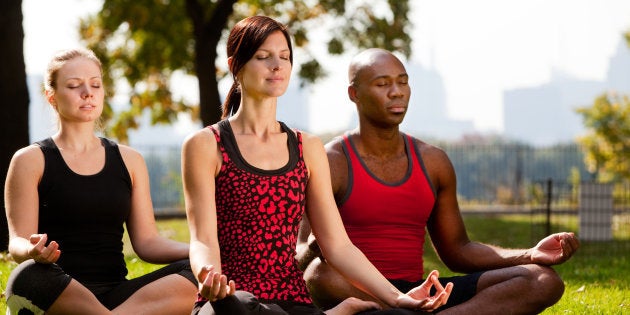
When I told people that I had been on a ten-day silent meditation course, the most common comment I heard was "It must have been so hard not to talk for that long!" This was also what I perceived would be the most challenging part before I began. Turning out the silence was the easy part.
The Structure of Each Day
Every day was the same in structure. The 'gong' woke us at 4 am. We would meditate from 4:30 am-6:30 am. Breakfast was from 6:30 am-8 am – which for me generally meant sleeping from 7-8am. We then meditated from 8-11am with a five-minute break at 9 am. Lunch was 11 am-1 pm. This was delicious, natural vegetarian food prepared from scratch, and was my favourite part of the day.
After lunch, we would meditate from 1 pm-5 pm, with five-minute breaks at 2:30 pm and 3:30 pm. Dinner (this was just a couple of pieces of fruit) was from 5pm-6pm after which we meditated from 6pm-7pm. There was an evening discourse (video lecture – second favourite part of the day) on what we were doing from 7-8 pm (we still had to sit on the floor for this). Finally, we meditated one more time from 8-9 pm. Lights were out at 9:30 pm and this continued for ten days. Oh, and I didn't mention that I was starving from about 7 pm-10 pm and 4 am-6:30 am every day!
Observation not Visualisation
You might be thinking that meditation is all about going to your 'happy place'. You sit down, or maybe even lie down, close your eyes and visualise a wonderful white light, and then you feel like you're floating on a soft fluffy cloud... or something like that? Not so much with a Vipassana meditation course! It was definitely a far cry from the five minutes of relaxation I enjoy at the end of my Wednesday Pilates class.
Vipassana meditation is all about observation. There is no visualisation. You simply sit, close your eyes, and observe sensations in your body. For the first two or three days, you focus only on the breath. Not on breathing a certain way, but just on observing the natural breath, as it is. You observe sensations, good and bad, and train your mind not to react to them. After day three, you move on from focusing only on the nose, to noticing sensations all over the body.
Everyone will feel different sensations. Pain was the sensation I felt 95 percent of the time. Pain in my neck, shoulders, back, hips, knees and ankles.
Did I mention the pain?
There were plenty of cushions available and I made the most of them but they provided little comfort for me after a while. So again, I reiterate that PAIN is what I felt all day every day (minus breaks) for ten days. But the type of sensation felt was irrelevant. The goal was to view these sensations objectively like they didn't belong to me. I was to remain with an 'equanimous' mind at all times – calm and balanced.
My mind drifted into 'lala land' numerous times over the ten days, and often stayed 'on task' for less than ten seconds at a time. But my attempts to meditate got progressively better. I sat through the 'hour of determination' three times a day without going too crazy. By day three I realised I could sit up straight for more than a few minutes at a time, and on day seven I sat up straight for an entire hour without any major postural adjustments.
By merely observing the sensations in my body I was beginning to sharpen my mind and to free myself from craving and aversion. By maintaining an equanimous mind when the good sensations arose (although there weren't many of them), I was delving deep into my unconscious mind to rid myself of craving. Similarly, by maintaining equanimity when bad sensations arose, I was starting to free myself from aversion, or hatred.
Accept the laws of nature
The Vipassana philosophy is centred on the law of impermanence, or the law of nature. This law states that everything is constantly changing. Everything rises, stays for some time, and then passes. The sensations I felt in my body would not be there forever, and I should merely observe them and understand this. Understand that I shouldn't become attached to the good sensations or hate the bad ones – they are all impermanent.
The other central concept to this technique is the recognition that there will always be misery in the world and that there are three things that cause all the misery: craving, aversion and ignorance. The first two have been mentioned, and the third I was beginning to combat by bringing awareness to my body. In turn, this would transfer to the real world, where I would be able to deal with life's ups and downs in a more balanced way. Selflessness, which is giving without expecting something in return, compassion for others and intrinsic happiness also form an integral part of this philosophy.
In summary
My understanding of the Vipassana technique and the benefits it brings developed throughout the course has only just started. I realise I've had only a small taste and I must continue to practice... as I am a long way from the total purification of the mind and the ultimate goal of full enlightenment (note: a fully enlightened person is also known as a "Buddha").
I'm a step in the right direction though. I know that meditation can benefit everyone (regardless of their religion or belief systems), when they are ready to take that step. I certainly got a lot more out of it than I would ever have expected.
